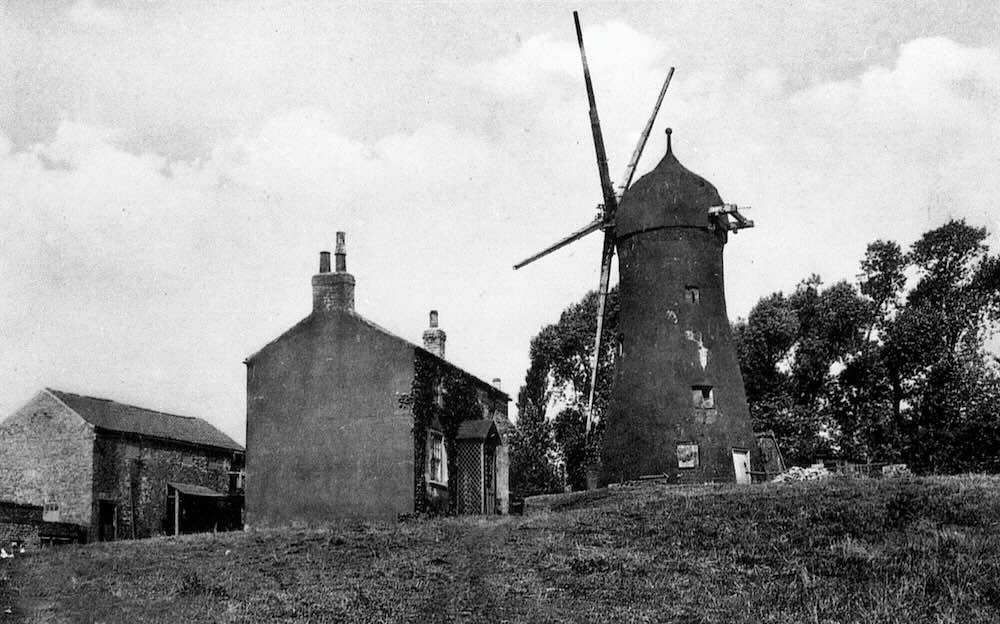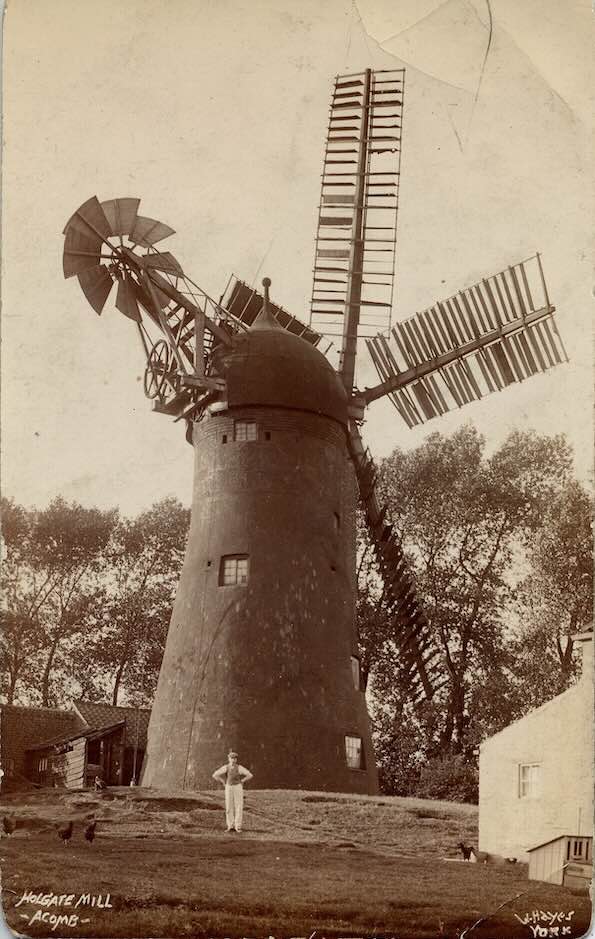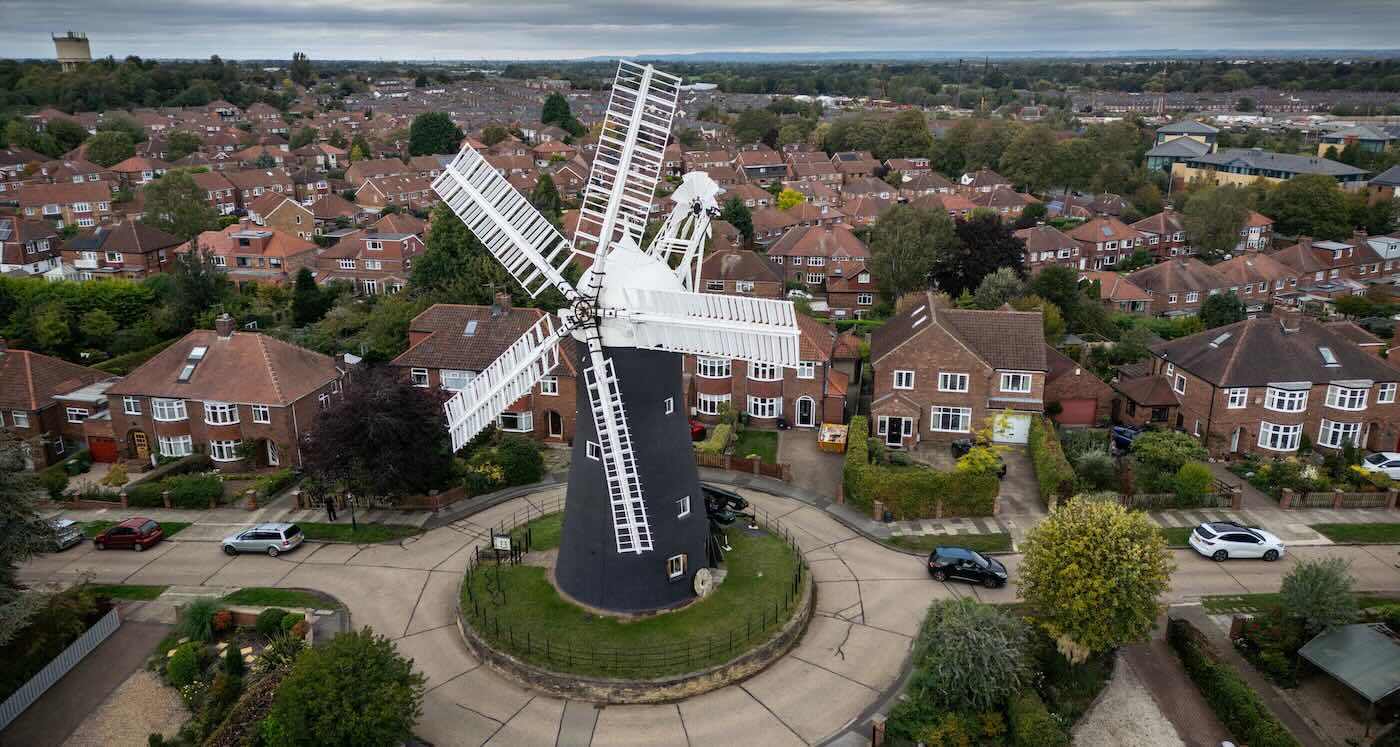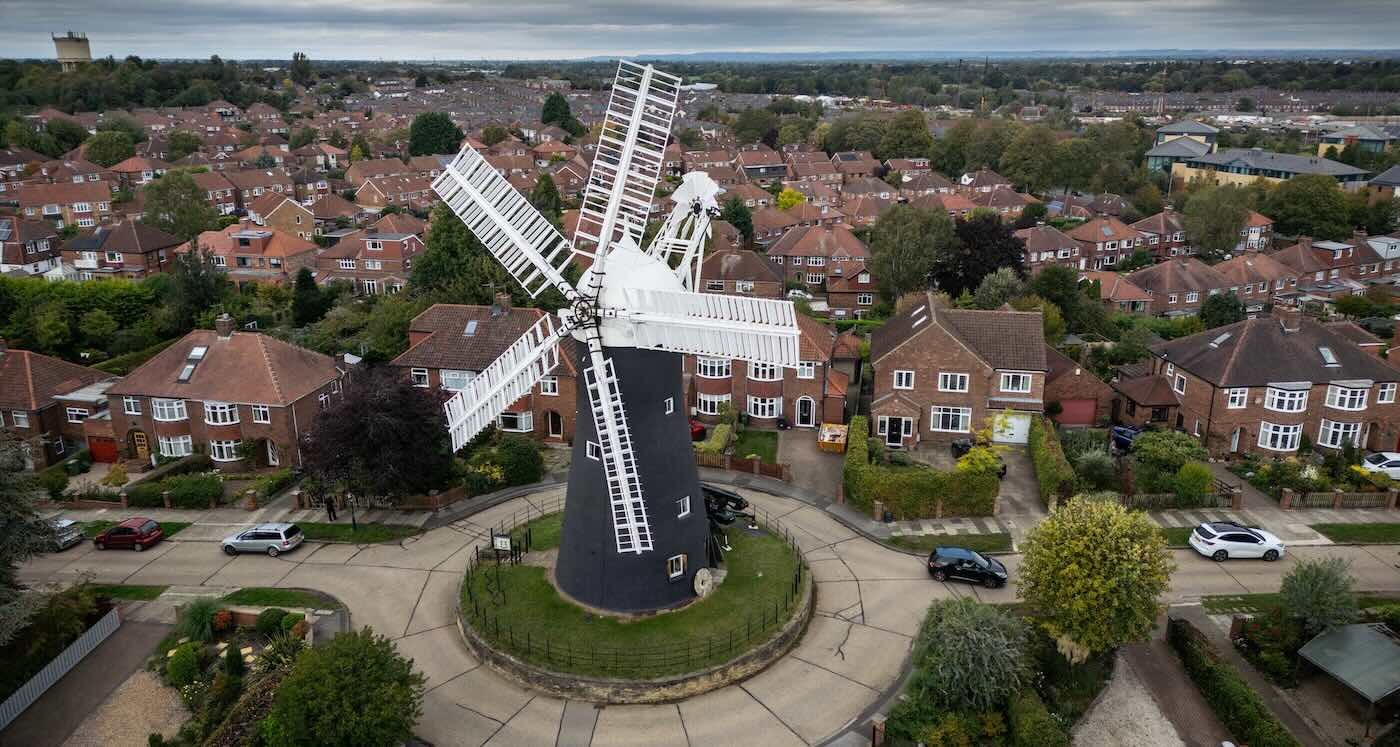
Britain’s oldest brick tower windmill which sits in the middle of a housing development is still operating, more than 250 years after it was first built.
Located in Holgate, a suburb of York, the walled city in northeast England, the Holgate Windmill has been working since 1770 after being built by George Waud, from Selby, after he bought the land in North Yorkshire two years earlier.
The mill, which grinds corn into flour, was built in the open countryside—one of many mills in the Yorkshire region—and overlooked the hamlet of Holgate.
The 90-foot-tall mill now sits on a roundabout in the middle of a housing development built in the 1940s and 50s after World War II.
It went unused for 90 years until 2001 when a preservation society was formed and successfully restored the mill to its former glory 13 years ago.
Steve Potts, a trustee of the group and its head miller, called it an important building.
“Of all of the hundreds of windmills which which were once found around Yorkshire, this is the only working one left.

“We are a group of 35 volunteers and we think it is important to keep the industry of milling going.
“It is a dying art in many ways and if we weren’t doing it, in a couple of years there may be no one left who knows how to,” the 69-year-old told SWNS news agency.

“Our plan is to keep it’s legacy going forever.”
The volunteers at the windmill have been doing a great job of that these days, as locals can buy wholemeal flour produced at the mill in a number of shops in York.
MAYBE CHANGE IS GOOD: Old Reformatory Prison Turned into Sunny New Apartment Complex Called ‘Liberty’ After $64M Injection
A quarter-millennium of history
After the mill was erected in 1770, three generations of the Waud family ran it until it was sold in 1851 to John Musham, a local gentleman who hired a tenant miller John Thackwray to take over.
Mr. Musham then sold the mill in 1855 to Joseph Peart who installed a steam engine which worked the milling gear and employed William Bean Horseman and later Joseph Chapman as millers.
After Peart’s death in 1864 it’s unknown who owned the mill, but in 1877 Eliza Gutch, from the Gutch family, took it over—but Chapman continued operating it until he retired.
The milling duties were then taken over by his son Charles but only until 1901, but he died young after breathing in hazardous flour dust.

Herbert Warters ran the mill from 1901 to 1922 and was followed by Thomas Mollett.
Grain was ground into flour here until the 1930’s using wind power, but it ended in 1933 when the Gutch family sold the building to the York City Council after Eliza died.
FOUND SOME HISTORY: Archaeologists Discover ‘Dazzling’ 3,000-Year-old Egyptian City, Left ‘As if it were yesterday’
A housing neighborhood soon grew up surrounding the mill after WWII.

But now, for over a decade, it’s been fulfilling that wholesome, age-old mission of sustainable, wind-powered food production in the only working 5-sailed, fully double-shuttered windmill in England.
SEND THE GOOD NEWS to History and Local Food Buffs on Social Media…


Leave a Reply